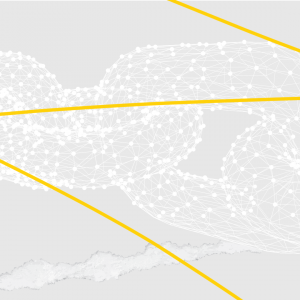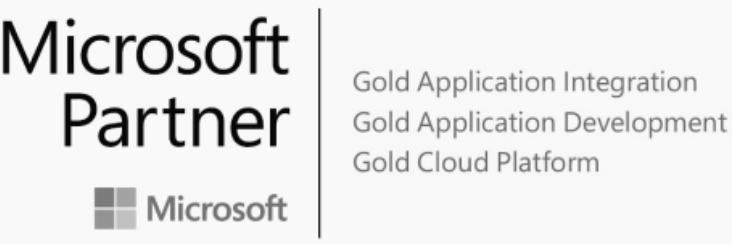We’ve all heard about the “work hard, play harder” saying, but how can we return to the play part when we’re now surrounded by work. Disconnecting from our devices after the working hours are over has become harder now that we’re all working from home, especially if all our hobbies involve them.
Work-life balance has always been a well-known concept, but now that the line between work and home has become thinner, this entire concept is enjoying its time under the critic’s spotlight. The past few months have redefined the way in which we do both work and play. If 7 months ago I was walking the floors in our downtown office, today I am writing this article from my living room with my dog as my assistant.
Life as we know it changes, and it changes fast, therefore, the proactive thing to do is to erase that line between work and personal life completely and redefine it as work-life integration.
Ready to dive into the topic?
What is work-life integration?
According to UC Berkeley’s Haas School of Business, work life-integration is an approach that aims to create harmony between all areas that define the concept of life: work, home and family, personal relationships, involvement in a community, care for our well-being and health.
How do you make work-life integration happen?
Now that we have got a clear understanding of the concept of work-life integration, let’s get started and see how to make all the puzzle pieces of our life fit together in harmony. The first step would be, of course, to make sure that you finish your work in time so that the gloomy overtime becomes a thing of the past. Your laptop is watching you, lonely, from the desk that you’ve been sat at for probably more than 8 hours. How do you not let work guilt trip you into trading precious me time for the tasks that will most likely be there tomorrow?
Review the tasks at hand and scratch them out
Analyze and investigate the tasks and problems you have at hand. Sure, it’s easy to get carried away and feel overwhelmed when you have a dark cloud hanging above your head, a swarm of bees with different ticket names from Jira or things from your to-do list that you’ve postponed and are starting to haunt you. Shoo those bees away and lay down the things that you have to do on a clean piece of paper. Make sure to write it down the old fashioned way, so you get the brutal satisfaction when you finally scratch the items off your list once you’ve accomplished what you had in mind.

Ask for help when needed
Now that you’ve got your list and the dark cloud doesn’t seem so dark anymore, it’s time to find the silver lining. What silver lining, you might ask? It might sound a bit cliche, but your colleagues might help you pull through and bring a little rainbow after them. Look at the list you just made and ask yourself “who might help me finish this?”. Don’t be afraid to ask around, you might find someone who sees your tasks as challenges and opportunities to grow and learn something new. It’s a win-win kind of situation.

Set boundaries and expectations
Teamwork does indeed make the dream work, but before that, you have to communicate. One important part of communication is setting expectations and boundaries with others. Talk about your schedule and the time you expect to be done with work, and emphasize the importance of having time for yourself. In case those boundaries are crossed, make sure to kindly remind your colleagues of your preferences, they get a little carried away too. To further enforce this rule, make sure you turn off your Slack notifications when you need the time of yourself, and ignore all incoming mails. More often than not, they’re not that urgent as the loud ping makes you think. If your hobbies include using a computer, make sure you have a separate one for the fun things — if this is not an option, just go ahead and create different users for both work and play.

Have an ear for advice
Besides the help with the actual tasks, your colleagues might even help you with pieces of advice when it comes to organizing your work. One thing that I’ve learned from Iulia, my colleague from the People & Culture team, was to block chunks of time in my calendar to better structure my work. This helped me a lot with prioritizing my tasks and also led to better time management, knowing that I have an assigned time frame for getting things done.

Self-efficacy and how to raise it
A useful concept that I’ve learned while studying Psychology was self-efficacy. Self-efficacy means that individuals know that they are capable of pulling off different behaviours in order to achieve performance. This concept is not something stable, that remains the same wherever we look in our life, which sometimes maybe a bad thing. Who doesn’t wish to have that kind of confidence in all domains? The good thing though, is that you have the power to increase it.

Now you might think that what I’m talking about is totally random, but let me show you how understanding more about this phenomenon helps you achieve work-life integration. When it comes to easy, routine tasks, your self-efficacy is high.
You’ve done this before, you know how it goes and how to trick the system. When it comes to these types of tasks, try to start with the ones that might be time-consuming and a bit more tiring, so that at the end of the day you can relax and do the easier tasks at a faster pace. The tricky part is when you have new and complex tasks that you’ve never had the chance to encounter before. In these types of situations, working the other way around might lead to better performance. Start with the easy tasks and bit by bit you build your self-efficacy.
For more tips on how to raise your self-efficacy, our colleague Iulia recommends the book “Eat That Frog!: 21 Great Ways to Stop Procrastinating and Get More Done in Less Time” by Brian Tracy.
Build a routine to end the day
To better accentuate the end of your workday, create a little ritual that indicates that indeed, the work is done and the fun & relaxing time can begin. Before the whole pandemic, my ritual was walking home and listening to different podcasts that would totally disconnect me from my work. Nowadays, the thing that I do is I start to organize and clean my desk and if I’m feeling especially tempted, I might even put my laptop into a drawer to completely erase it from my mind. Out of sight, out of mind is always a good idea when it comes to prioritizing the little time you have for yourself.
Moreover, Slack has a little helpful feature that allows you to set a notification schedule so that none can disturb you after a set time or wake you up in the morning with a random message.

Schedule your day however you want
Remote work is here to stay, so take full advantage of it! Now that there’s no longer a need to commute and wake up early to get in time to work you can use that time however you like. For example, our UX/Product Designer Tom, who is definitely an early bird, starts his day at 7 AM and gets off work sometime in the afternoon so he has plenty of free time to get the worm. Ildi, our Team Lead/Mom of two, starts her day by spending time with her children before logging in to tackle the development challenges of the day.

Final words
However, sometimes the natural course of the day does not follow a linear cycle: wake up, work, enjoy yourself. That’s why the concept of work-life balance is kind of outdated. If you have a flexible work schedule, embrace it! Work-life integration is all about intertwining your life with your work, especially now that a 9 to 5 program is something you don’t often hear about. Feel free to start your day with one of your hobbies, go out for lunch with a friend, watch an episode of your favourite show in the middle of the day. You know better what suits you and what helps you keep a light mood during the day. Take breaks, enjoy yourself and return to work with fresh forces. Be mindful of your own well-being and stay rebel!






